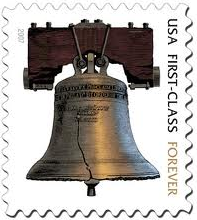coke_freestyle_menu
coke_freestyle_screen
My family and I went into a California Tortilla the other night to grab a quick dinner. Off to the side I notice a long line of people waiting to fill their soda cups. It used to be, when you went out for fast food, the people behind the counter would ask you what you wanted and they would hand it to you. Now, at this location, it appeared it could take as long to get our drinks (in a separate line) as it would to get our food. Though I appreciate this California Tortilla location wanting to empower the consumer by giving us 100+ choices of our favorite mixture of soda-pop, most people in line appeared paralyzed by the amount of combinations and permutations. When I went into a different California Tortilla, I noticed an old-school fountain machine. There was no line and I saw two people filling their soda cups at the same time. It made me question the value the additional choices offered, especially when all I want is water.
So, I guess my question is, should there be fewer options or a better feedback tool for consumers to respond to? When doing a little research on this post, I found a poster of a freestyle "menu" at Taco Mac. I believe the use of this VMS (Visual Management System) could keep the lines short at the California Tortilla location. But, I don't know. Are there shorter (or no) lines at the Atlanta Taco Macs? To shorten the lines at California Tortilla, I would propose they get the menus and hang a poster near the machine. I think people would be more apt to decide what they wanted before they stand in front of this machine with 100+ choice presented to them. I think it would cut down on people browsing the menu, while there is a line behind them. My goal? I want the cut down lead time and cycle time as much as possible. Not sure what those are? I found a great definition by Corey Ladas.
Lead time clock starts when the request is made and ends at delivery. Cycle time clock starts when work begins on the request and ends when the item is ready for delivery. Cycle time is a more mechanical measure of process capability. Lead time is what the customer sees.
Lead time depends on cycle time, but also depends on your willingness to keep a backlog, the customer’s patience, and the customer’s readiness for delivery.
Another way to think about it is: cycle time measures the completion rate, lead time measures the arrival rate. A producer has limited strategies to influence lead time. One is pricing (managing the arrival rate), another is managing cycle time (completing work faster/slower than the arrival rate).
I know you usually don't think of Agile or Lean when talking about fish tacos, burritos and soda-pop, but I had to get this off my chest.








 by Eliyahu M. Goldratt (yes, if someone clicks on that link and buys a book, I would get credit)
by Eliyahu M. Goldratt (yes, if someone clicks on that link and buys a book, I would get credit)
